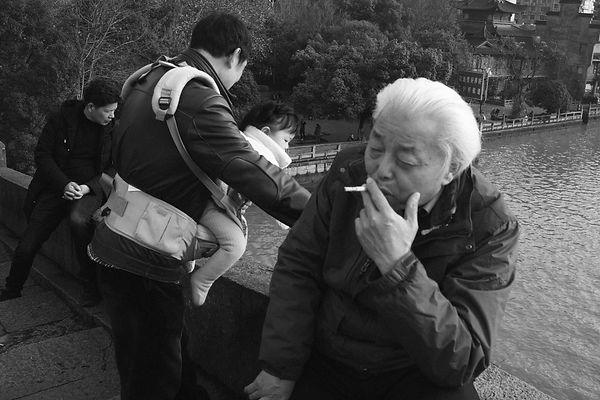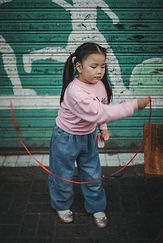Yanran Gao
PHOTOGRAPHY
THE MORTAL THEATER
https://www.youtube.com/watch?v=H81khgkuKHk
I used to give a wider berth to documentary photography as it strikes me blatant in portraying social poverty and tragedies. After all, I was not mentally strong enough for cruel truths. Once by chance, I captured some intriguing pictures that presented the down-to-earth hustle and bustle of mundane life, betraying a tinge of humor. This changed my stereotype about documentary photography and I realized that even serious subjects could be conveyed gracefully. It boils down to how I view this world.
Those who bumped into my world are all poets who convey the emotions of the city. Documentary photography grows on me and I have come to photograph my surroundings by intuition, standing the polar opposite of what I used to do. I came to know Jean Baudrillard’s photographic theory. Though we film totally different subjects, I concur with Jean that photography is accompanied by a loss of identity and it is to tempt or to be tempted. Jean said that he would forget himself as a photographer seeking objects, and felt drawn by an object seemingly waving “come to photograph me”. Jean did not film people, thinking that people were overloaded with meanings. On the contrary, I am curious by nature of others. Each time when I take to the street, I reap unexpected encounters or make a mundane theatre. I am the person who enters accidentally others’ world. I expect those encounters as if I expect a new movie and am ready to marvel at random surprises. Beside a planned project, photographs out of accidents seem more thrilling.
I think the charm of documentary photography rests in the invisibility of “I”. When examining photos, I can re-experience the two-way attraction between me and the subject formed at the moment when the shutter is pressed. The photos reflect the urban life and rhythm, the gap between rich and poor and people’s attitude toward life... There is no script, and but only the most realistic live drama in real life. This urban theater never ends.
I made the photos into a book and it is like a diary that chronicles a visual personal history, turning what I see and hear into something that can be shared with the world. In making the book, I revisited my photographs and felt there was something new that finally sank in. Making the photo book is like a secondary creation, in which I stretch my imagination beyond the images and combine and arrange them in new ways. Although the physical book cannot last new as long as electronic images, it is, after all, a proper media for a vividly tangible mundane life.































